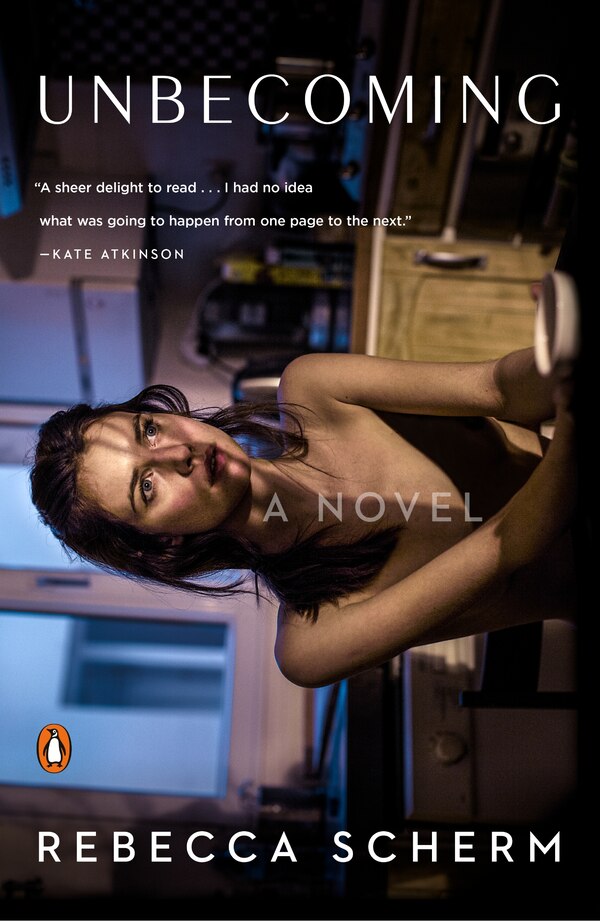Home
Unbecoming by Rebecca Scherm, Paperback | Indigo Chapters
Loading Inventory...
Coles
Unbecoming by Rebecca Scherm, Paperback | Indigo Chapters
From Rebecca Scherm
Current price: $23.00


Coles
Unbecoming by Rebecca Scherm, Paperback | Indigo Chapters
From Rebecca Scherm
Current price: $23.00
Loading Inventory...
Size: 0.67 x 8.4 x 0.675
*Product information may vary - to confirm product availability, pricing, shipping and return information please contact Coles
A PENGUIN READERS GUIDE TO UNBECOMING BY REBECCA SCHERM ABOUT THE BOOK Unbecoming by Rebecca Scherm, the author of A House Between Earth and the Moon, is the highly praised debut novel of psychological suspense about a daring art heist, a cat-and-mouse waiting game, and a small-town girl’s mesmerizing transformation. On the grubby outskirts of Paris, Grace restores bric-a-brac, mends teapots, and resets gems. She calls herself Julie, says she’s from California, and slips back to a rented room at night. In truth, home is Garland, Tennessee, where two young men have just been paroled. Both were jailed for a crime that Grace planned. The heist went bad—but not before she was on a plane to Prague, contraband in her bag. As Grace’s web of deception unravels, she begins a cat-and-mouse game that echoes the best of Alfred Hitchcock and Patricia Highsmith and is sure to appeal to fans of The Girl on the Train. A CONVERSATION WITH REBECCA SCHERM There’s a lot of fascinating information in this book about the art and antique worlds. What kind of research did you do to make this setting feel so genuine? When I used to visit my grandparents in the summer, my grandmother and I spent a lot of long, hot Florida afternoons watching Antiques Roadshow. I loved the small suspense of it: the tension between the objects, both the obviously beautiful and the homely, and their owners, and then the big reveal of “market value." When I was a bit older, in New York, I was making my own art (unlike Riley, I was all ideas, lousy execution) and rebelling against the ideas about history and craftsmanship that I’d learned growing up, when my family never missed an opportunity to tour a historic home. But soon enough, I became more interested in ideas about art—“worth," intention, influence, ownership, taste—than I was in making art myself. I did all kinds of nutty research for this book. On one memorably embarrassing occasion, I went to a gem dealer in the Diamond District, trying to learn and sound knowledgeable at the same time. I bought a seven-dollar ametrine to thank him for his trouble, and then I had to pay the last two dollars in change. Not my smoothest game. Every object in this book is something real that I found for sale somewhere. Some of them I visited in person, and they surprised me: the first time I saw James Mont pieces in real life, at Todd Merrill’s store in New York, the metallic finishes seemed cool, even icy to me, where I’d always imagined them to glow with a kind of heat. Always, I sought out objects that had some kind of contradiction, like the hideous pink diamond watch or the lumpy pottery. And I found that when Grace wasn’t moved by the object, she had no trouble stealing it. Forgery versus authenticity is questioned in this novel, both in terms of artifacts and personalities. Why explore this dichotomy? Several years ago, I read a biography of the art forger Elmyr de Hory, who argued that if his Picassos were as good as Picasso’s, what was the difference? That biography was written by Clifford Irving, who was himself a fraud. But the funny thing is that de Hory’s notoriety has given his forgeries value in their own right. What interests me is the foggy sea between true and false. We’re confronted all the time with half-truths, with moments of doubt where we make an unconscious choice to see or not see the truth, with performances that have subsumed the actor. If you’ve ever talked yourself into or out of something too effectively, you’ve performed your way to a new truth. Grace’s life is made of these performances, and her work restoring decorative arts seems to her like a real penance, even if it seems to others—Hanna, for example—like a kind of approved fakery, a tacit agreement to pretend that mistakes can be truly erased, buffed out, and shined over. As I wrote, these roads—truths and lies, originals and frauds and restorations, inner and outer selves—kept intersecting unexpectedly. I’d be writing about James Mont and find myself writing about Grace’s Id, or Grace would fantasize about art theft while refusing to confront her jealousy of Riley’s position in his family. The Heather Tallchief story is a perfect example, because the way Grace aligns herself with the story is not how the reader aligns her. So it seems less a dichotomy to me than, say, a Möbius strip. | Unbecoming by Rebecca Scherm, Paperback | Indigo Chapters








